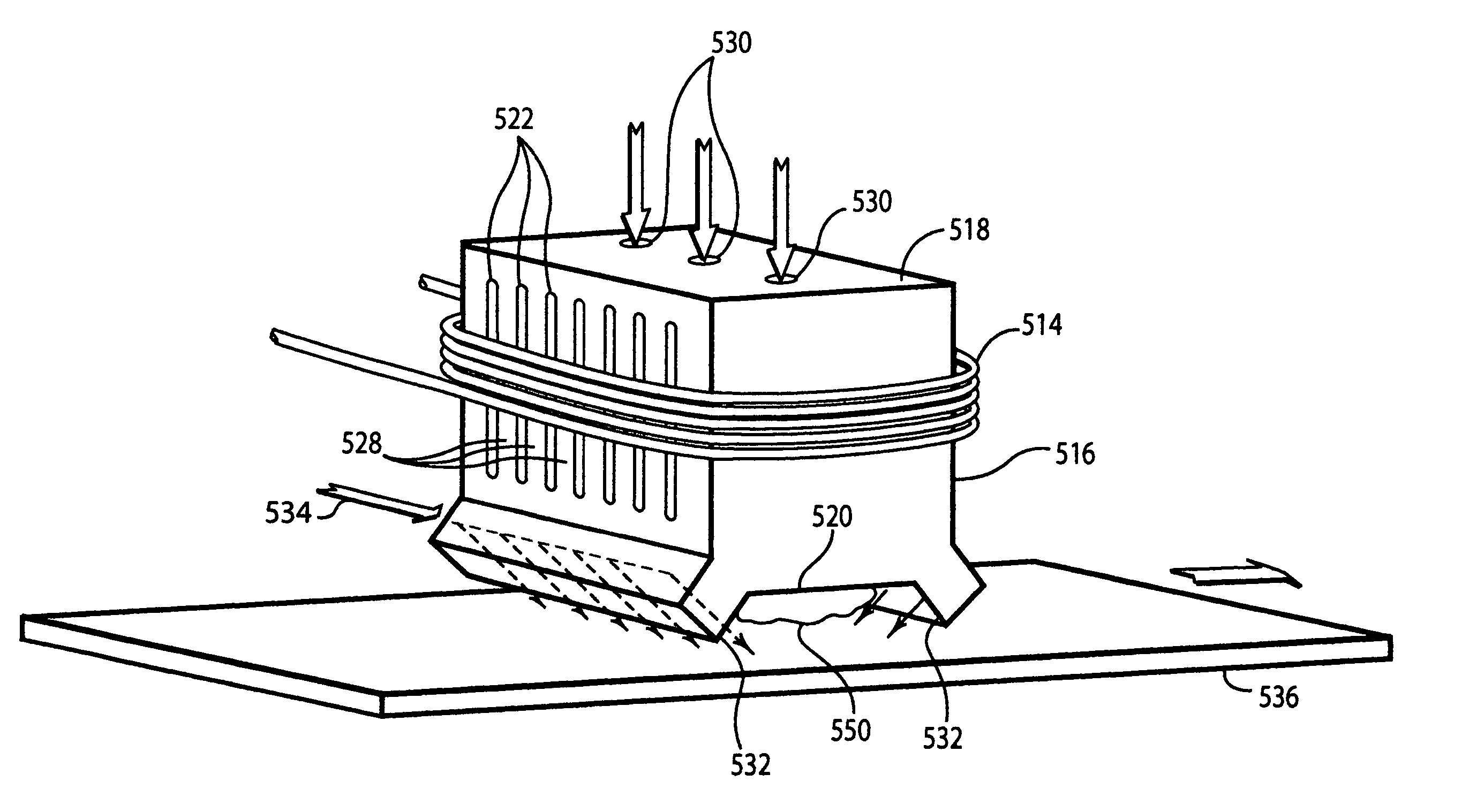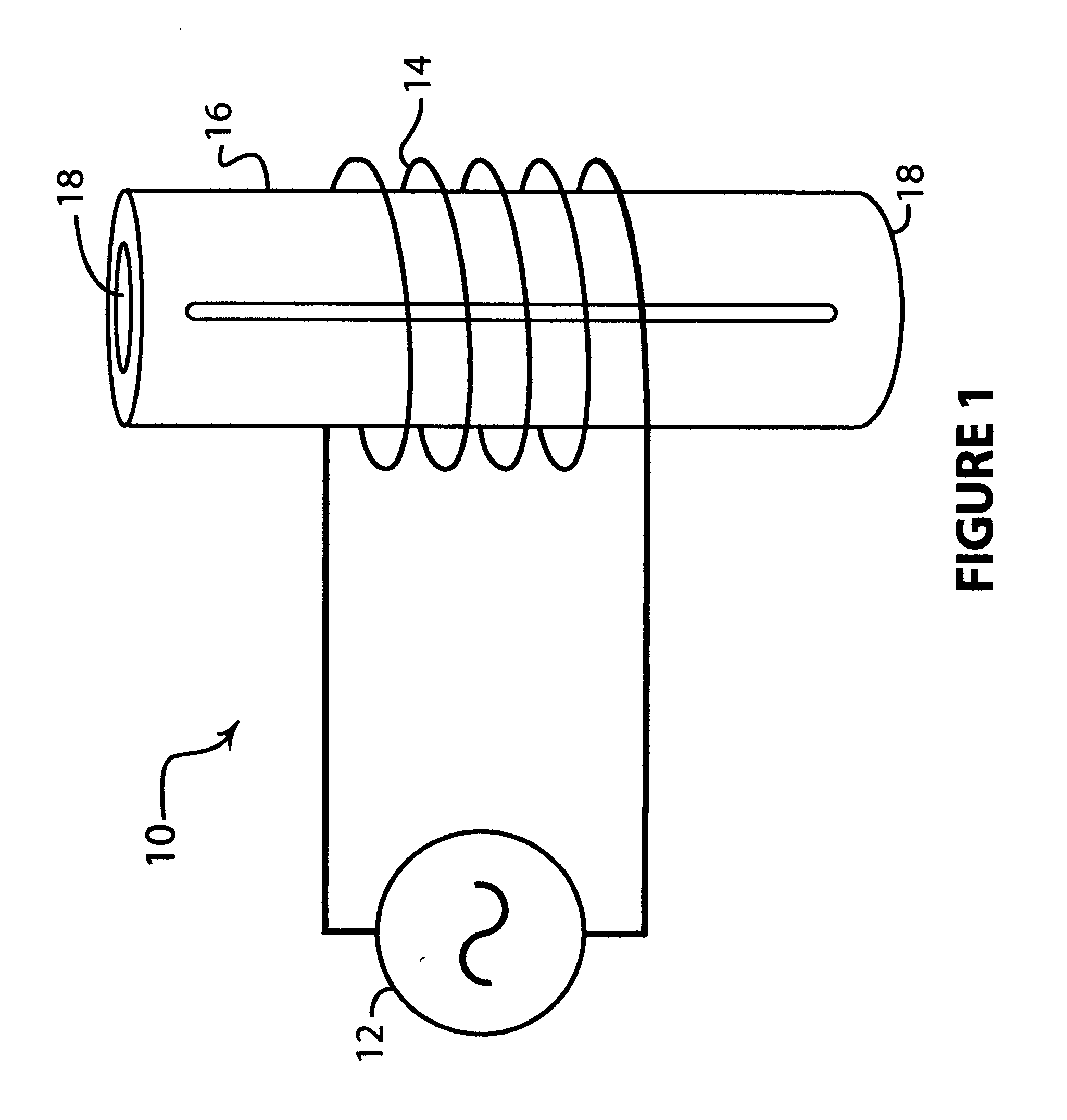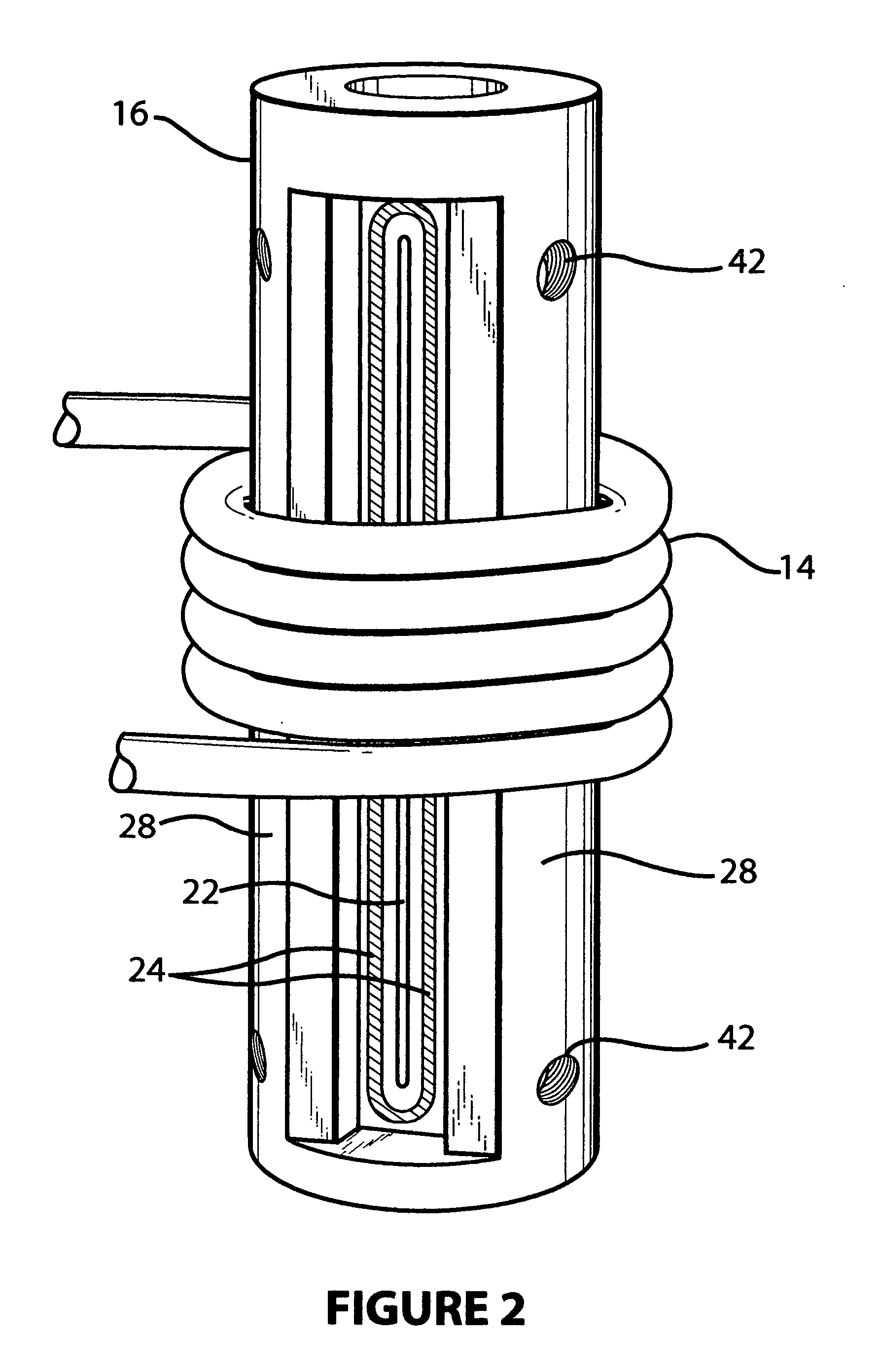Inductively coupled plasma source using induced eddy currents
a plasma source and inductive coupling technology, applied in the field of inductive coupling plasma processing sources, can solve the problems of significant limit the scale and operational range of an inductive coupling plasma source, the need to extract and dissipate the thermal energy transferred from the plasma to the chamber walls, and the mechanical and thermal constraints of structural dielectric materials such as quartz or sapphire, so as to achieve the effect of minimizing power loss
- Summary
- Abstract
- Description
- Claims
- Application Information
AI Technical Summary
Benefits of technology
Problems solved by technology
Method used
Image
Examples
Embodiment Construction
[0023]FIG. 1 illustrates an inductively coupled plasma source 10 in accordance with one embodiment of the invention. An RF power source 12 furnishes alternating current to induction coils 14 disposed coaxially about a substantially metallic plasma discharge tube 16 containing a plasma within. As illustrated in the embodiment of FIG. 1, plasma discharge tube 16 is configured as a hollow cylinder open at both ends 18 to allow for gas inlet and exhaust, as for example in an inline gas processing application. Alternatively, the plasma tube may be configured as a sealed vacuum chamber having metered inlet and exhaust ports for feed and processing gases. Although not shown, the apparatus may also comprise impedance matching elements or circuitry disposed between RF power source 12 and induction coils 14, as well as measurement and feedback circuitry to regulate operation of the device. Also not shown are other features that may typically be included in a plasma processing system such as v...
PUM
| Property | Measurement | Unit |
|---|---|---|
| Dielectric polarization enthalpy | aaaaa | aaaaa |
| Electrical conductor | aaaaa | aaaaa |
| Frequency | aaaaa | aaaaa |
Abstract
Description
Claims
Application Information
 Login to View More
Login to View More - R&D
- Intellectual Property
- Life Sciences
- Materials
- Tech Scout
- Unparalleled Data Quality
- Higher Quality Content
- 60% Fewer Hallucinations
Browse by: Latest US Patents, China's latest patents, Technical Efficacy Thesaurus, Application Domain, Technology Topic, Popular Technical Reports.
© 2025 PatSnap. All rights reserved.Legal|Privacy policy|Modern Slavery Act Transparency Statement|Sitemap|About US| Contact US: help@patsnap.com



